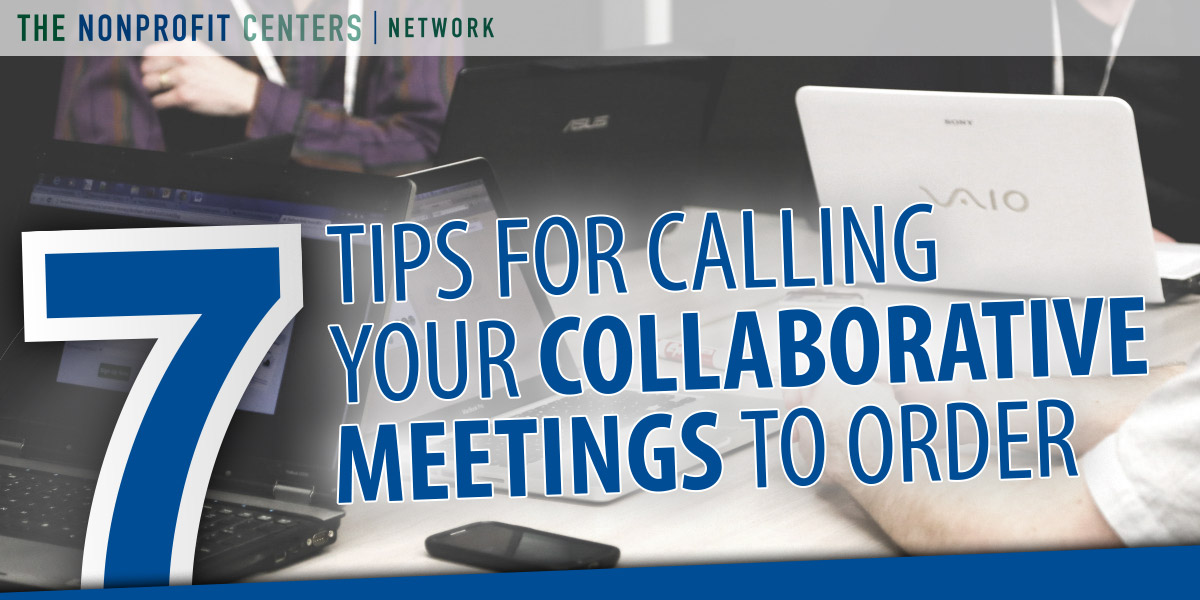“How do we spark collaboration in our space?” “Let’s call a meeting!”
This is the starting point for many new shared space managers, but so often it doesn’t work out the way they hope. People dread meetings for many reasons – often they aren’t well planned, they aren’t well attended, and they drag on for far too long. Here are a few tips to make sure your meetings among your collaborative partners are on point.
- Take more than 15 minutes to plan the agenda: Good meetings are very deliberate, with clear goals for what you want to accomplish. If you’re trying to generate ideas for collaboration, make sure there’s a structured brainstorming activity on the docket that goes beyond an open discussion. Activities allow all voices to be heard, not just those who speak up first.
- Make sure the right people are in the room: Think through who needs to be at your meeting. Executive Directors? Program staff? Do some one-on-one outreach to make sure that the people with the most to say know why this meeting is a priority. The leg work will be worth it as your first collaborative programs start to take shape.
- Use your time wisely: Once the meeting has started, make sure someone is watching the clock. You gain people’s trust when you are respectful of their time. (This is a lot easier when you’ve followed Tip #1)
- Don’t forget to set some ground rules: Taking a few minutes for your collaborative to come to consensus on the expectations for what goes on in these meetings is an invaluable practice. Ground rules are a facilitator’s best friend.
- Encourage people to think outside of the box: When was the last time you were asked to draw or build or move your body in a meeting? Activities that encourage you to communicate nonverbally engage different parts of your brain than you would typically use at the office. You can have people move around the room to vote for different ideas. You can ask people to draw a picture of how they want the collaborative to be seen in five years. The possibilities are only limited by your imagination.
- Make sure there’s a reason for people to stay engaged: Recently I was reminded that self-interest rightly understood can be a powerful tool for fostering collaboration. Every organization has their own goals that they are striving to achieve. By taking care to show specific opportunities where your partners can benefit, they will continue to come back for more.
- Don’t meet for the sake of meeting: Standing meetings can be the death of a good group. Make sure to schedule meetings when there is a reason and work that you can accomplish together.
Meetings can be a powerful tool for your collaborative, but make sure you have a clear goal in place. With a little planning, you can create an experience that truly adds value to your community.

